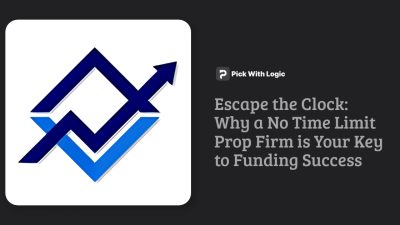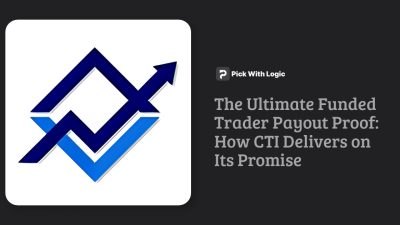Unlock the secrets of AI with insights up to October 2023. Unravel the mysteries and stay ahead in a rapidly evolving digital landscape. What innovations await? Dive into the unknown.
So, you want to become a funded trader? The allure is undeniable: access to significant capital without risking your own. But before you can trade a six-figure account, you have to pass the evaluation or ‘challenge.' Many aspiring traders think the key is to chase massive profits, but they quickly learn a hard lesson. The secret to success isn't about hitting home runs; it's about disciplined risk management. A solid prop firm challenge strategy is your roadmap to securing that funded account, and it all starts with these five proven approaches.
Strategy 1: The Low-Risk, Slow-Grind
Patience is a virtue, especially in trading. The slow-grind strategy is built on this principle. Instead of aiming for the profit target in a few lucky trades, you focus on making small, consistent gains while keeping your risk incredibly low. This approach involves using tight stop-losses, aiming for a modest risk-to-reward ratio (like 1:1 or 1:1.5), and building your equity curve brick by brick.
This method is perfect for traders who are disciplined and prefer a less stressful trading experience. It's particularly powerful when combined with prop firms that offer evaluations with no time limits. When you're not racing against the clock, you can wait for high-probability setups and let your edge play out over time. This removes the psychological pressure to force trades, which is a leading cause of failure. It's an ideal approach for no-time-limit challenges like FunderPro's, where consistency is valued over speed.
Strategy 2: The Swing Trading Advantage
If scalping or day trading isn't your style, a swing trading strategy might be your ticket to passing the challenge. This approach involves holding positions for several days or even weeks to capitalize on larger market swings. By analyzing higher timeframes like the 4-hour or daily charts, you can identify major trends and ride them to the profit target.
The main advantage of swing trading is that it requires less screen time and helps you avoid the noise of lower timeframes. You can place fewer, higher-quality trades, which often leads to better decision-making. Since your stop-losses will be wider, proper position sizing is critical to stay within the drawdown rules, but meeting the profit target can often be achieved with just a handful of successful trades.
Strategy 3: The News Avoidance Protocol
A crucial part of any prop firm challenge strategy is knowing what not to trade. High-impact news events like NFP or CPI announcements can cause extreme volatility, and most firms have strict rules against trading during these periods. Violating them is an instant failure. The best strategy is simple avoidance.
- Check the Calendar: Always start your day by reviewing an economic calendar for high-impact events.
- Close or Protect Positions: If you have an open trade, consider closing it or moving your stop-loss to breakeven well before a major release.
- Stay on the Sidelines: Don't open new positions in the minutes leading up to and following the announcement. The risk of slippage and unpredictable spikes isn't worth it.
Protecting your account is your top priority.
Strategy 4: Master Your Position Sizing
The quickest way to fail a challenge is by getting greedy with leverage. This is the #1 mistake traders make. To counter this, your strategy must be built on masterful position sizing. Instead of thinking about the potential profit, think about the potential loss. Before entering any trade, calculate your exact position size so that a loss only risks a small, pre-defined percentage of your account (e.g., 0.5% to 1%). This disciplined approach removes emotion and prevents a single bad trade from violating your drawdown limits.
Strategy 5: Make Drawdown Your #1 Metric
While the profit target is the goal, your daily focus should be on the drawdown limits. Successful traders adopt a ‘defense-first' mentality. Your primary job is not to make money, but to protect the capital you've been given. This means knowing your daily and maximum drawdown limits to the dollar and never letting your trades get close to them. By making drawdown your most important metric, you ensure you stay in the game long enough for your winning trades to eventually hit the profit target. This is the essence of professional risk management.
Conclusion
Passing a prop firm challenge is an achievable goal for any disciplined trader. It's not about finding a magic indicator or a secret formula. It's about developing a robust prop firm challenge strategy centered on risk management, patience, and following the rules. Whether you choose a slow-grind approach, swing trading, or a hybrid of these defensive strategies, your focus must always be on capital preservation.
Have a winning strategy? Put it to the test with our flexible challenge. Get your FunderPro funded account now!





